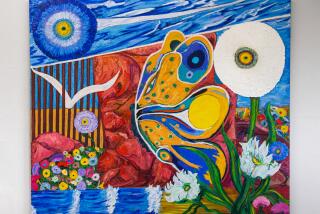Butterflies Navigate Using Map of UV Light, Study Finds
- Share via
Monarch butterflies making their annual migration from the eastern United States to winter residences in Mexico’s Sierra Madre mountain range find their way by following a three-dimensional map made of rays of polarized ultraviolet light, a study has found.
Though UV light is invisible to humans, to butterflies it appears as a grid in the sky that emanates from the sun, researchers reported this week in the journal Neuron.
As the sun travels east to west across the sky, so does the grid. To compensate, the butterflies use an internal clock that recalibrates the grid throughout the day so they can travel in a straight line, said Dr. Steven Reppert, a professor of neurobiology at the University of Massachusetts Medical School and coauthor of the study.
Reppert and his colleagues knew the butterflies used polarized light to navigate, but they weren’t sure it was from the UV portion of the spectrum. Their suspicions were confirmed when they put the insects in a barrel-sized flight simulator and used a plastic filter to block UV light. The butterflies could see, but they just flew around in circles.
“Without [UV], they get very confused and lose their sense of direction,” said coauthor Adriana Briscoe, an assistant professor at UC Irvine who studies butterfly vision.
The scientists discovered that the part of the butterfly visual system that detected polarized light was dominated by photoreceptors for UV. To their surprise, they also found that those receptors were linked to neural fibers that contained a key protein used to regulate the butterfly’s internal clock.







